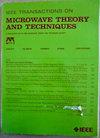A Large-Scale, Low-Power, Compact 5G mm-Wave Phased-Array Transceiver in 45 nm RFSOI CMOS
IF 4.5
1区 工程技术
Q2 ENGINEERING, ELECTRICAL & ELECTRONIC
IEEE Transactions on Microwave Theory and Techniques
Pub Date : 2025-03-13
DOI:10.1109/TMTT.2025.3544620
引用次数: 0
Abstract
This work describes a compact基于45nm RFSOI CMOS的大规模、低功耗、紧凑型5G毫米波相控阵收发器
这项工作描述了一种紧凑的2 × 16通道相控阵收发器IC,设计用于24.25-29.5 GHz的毫米波(mm-Wave)应用,采用45 nm射频绝缘体上硅(RFSOI) CMOS技术制造。该设计实现了高射频性能,并占用了紧凑的模具面积。它具有一个Doherty功率放大器(PA),在三阶互调失真(IMD3)为-25 dBc时实现14.5 dBm的高线性输出功率(POUT),以及一个紧凑型低噪声放大器(LNA),在工作频率范围内宽带噪声系数(NF)低于2.75 dB。在发送器(TX)模式下,收发器IC提供的平均POUT大于11.0 dBm/Ch。,误差矢量幅度(EVM)为-25 dB,而功耗低于155 mW/Ch。在接收器(RX)模式下,它记录的NF范围为3.2至3.7 dB,功耗低于48.8 mW/Ch。收发器IC的整体尺寸为59.8 mm2,每个通道占用1.87 mm2的芯片面积。
本文章由计算机程序翻译,如有差异,请以英文原文为准。
求助全文
约1分钟内获得全文
求助全文
来源期刊

IEEE Transactions on Microwave Theory and Techniques
工程技术-工程:电子与电气
CiteScore
8.60
自引率
18.60%
发文量
486
审稿时长
6 months
期刊介绍:
The IEEE Transactions on Microwave Theory and Techniques focuses on that part of engineering and theory associated with microwave/millimeter-wave components, devices, circuits, and systems involving the generation, modulation, demodulation, control, transmission, and detection of microwave signals. This includes scientific, technical, and industrial, activities. Microwave theory and techniques relates to electromagnetic waves usually in the frequency region between a few MHz and a THz; other spectral regions and wave types are included within the scope of the Society whenever basic microwave theory and techniques can yield useful results. Generally, this occurs in the theory of wave propagation in structures with dimensions comparable to a wavelength, and in the related techniques for analysis and design.
 求助内容:
求助内容: 应助结果提醒方式:
应助结果提醒方式:


